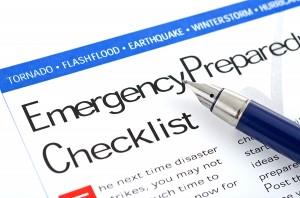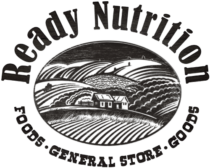
Making the decision to prepare for an emergency begins with a level of awareness. A prepper knows that there are possible threats, and it only makes sense to be as prepared as possible beginning with elemental disaster items to sustain basic needs (food, water, clothing, and shelter) and then adding more preparedness layers onto it. Basic disaster items are intended to sustain a person and their family for 3-5 days. One of the common reasons why people do not prepare is because of the overwhelming nature of it all. Having a guide to help will assist in determining what steps need to be taken by you and your family members when an emergency arises.
Family – Make a Plan
Designate an out-of-town contact.
Designate a local contact.
Create a family and/or neighborhood emergency calling list. Each person calls the next person on the list to minimize time on the phone.
Set up a neighborhood meeting place.
Set up an out-of-town meeting place.
Create an information list of names and information on each member (contact information such as phone numbers and addresses).
Include important papers (birth certificates, marriage license, insurance information, house deeds, life insurance, car insurance) and vital medical information (allergies, blood types, medical prescriptions needed) on family members and pets, including doctors phone numbers and veterinary phone numbers and addresses.
Create emergency wallet cards with emergency information.
Print out the plan to put in G.O.O.D Manual and email to family members.
3 Day Essentials – 72 Hour Kits
Create a 72-hour menu and pack food. Keep these considerations in mind with meal planning.
Have these essential survival tools packed.
Created a vehicle 72 Hour Kit.
Have a water bottle for each family member.
Have cash stored away. For a bug out situation carry 10 of each type of bill. This will ensure you have plenty of money for an emergency.
Have season appropriate clothing packed. The layered approach is best and will cut down on space.
Have a good pair of walking shoes or hiking boots for every family member.
Have an emergency shelter such as a tent or tarp packed.
Information Sources of Possible Disasters in Your Area and Country
Collecting information on disasters that threaten your area is a great way to research the disasters as well as prepare for them. Here is a list of the common types of emergency people typically prepare for:
Flooding
Fire Safety
Blizzards
Pandemic
Hurricanes
Earthquakes
Heat Safety
Tornado
Flash Mob
EMP
Nuclear Disaster
Tsunami
Volcano
Wildfires

Hi, I have two questions, We live in Pueblo CO near the Pueblo Chemical depot, would it be wise to get a couple of gas masks?
they have never any problems, But
I started saving water in milk bottles I rinse them out about 3 time with hot water first time soapy and let them air dry for a few days before filling them, will the water still be good to use even for cooking and sanitation?
Thanks, Kevin
Hi Kevin,
If preparing for a nuclear event is your main concern, then it would be a good investment. On the other hand, if you are trying to create a well rounded preparedness supply, you may want to get some other preparedness supplies in place. To create a reliable preparedness supply, consider reading the 52-Weeks to Preparedness series.
Best of luck!
Tess
I worked as a guard at PCD for 8 years. The chance of a large release is very low. The buildings where the chemical is stored could almost take a nuclear attack. Also- the chemical has degraded a great deal, lowering( but not eliminating) its dangerous properties. Having said that, I have 2 high end ($100 & up)gas masks for general readiness purposes.
In our town, we live within reach of two MAIN interstates boxing the compass, and more miles of RR tracks than I’ve ever seen! You left one scenario out…
Chemical or gas spill from an 18-wheeler or train derailment/wreck.
That’s what I prepare for, everything else would be rare occurrences. Not out of the realm of possibility, but rare enough that their impact would be minimal on us. Mid-Atlantic area, away from the coast by a good bit.